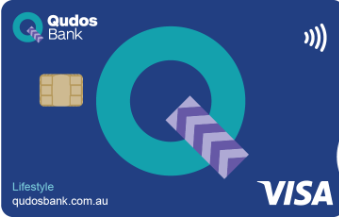What is the purchase rate on credit cards?
Savrr.com is a trading name of Fair Comparison Pty Ltd. Comparison tables are powered by Fair Comparison Pty Ltd who do not compare every provider in the market, or all products from the displayed providers. Fair Comparison Pty Ltd does not give recommendations, advice or credit assistance and may receive a fee if you, apply, click through, or successfully qualify, for a product displayed.
Learn More
Many people mistakenly think credit cards have just one interest rate. The truth is, credit cards can have several interest rates for different purposes, including balance transfers and cash advances. While you may never do a balance transfer or use a cash advance, if you have a credit card, you’re almost certainly going to buy something with it and will probably want to avoid having to pay interest on your purchases, if you can.
If you’re going to use your credit card wisely or find a suitable one for your circumstances, it’s a good idea to understand what credit card purchase rates are.
What is the purchase rate on credit cards?
'Purchase rate’ refers to the interest rate you’ll be charged if you make a purchase with your credit card. It’s the main interest charge on a card and is usually what people refer to when they talk about credit card interest rates.
If a credit card offers an interest-free period, the purchase rate will apply to any standard purchase balance on the card after the end of the interest-free days. If there’s no interest-free period on a card, the purchase rate will apply as soon as you make a purchase.
The purchase rate for credit products is different to a card’s cash advance rate and cash advance fee, and it’s also different to the balance transfer rate and balance transfer fee. Cash advance rates apply to specific kinds of transactions which generally include:
- ATM cash withdrawals
- Transfers from your credit card to another bank account
- Gambling transactions
The balance transfer rate applies when you transfer a credit card debt from an existing card onto your new credit card.
How do purchase rates on credit cards work?
A credit card’s purchase rate is the rate of interest charged on most everyday purchases. Everyday purchases are transactions where credit is spent on something that’s not an excluded product or service. (Gambling is an example of an expense that’s not counted as an everyday purchase.)
There are three different ways a credit product issuer may charge interest calculated using the purchase rate:
- If a card offers a special introductory offer that involves a special interest rate, you’ll be charged interest according to the purchase rate when that introductory time expires.
- If a card offers an interest-free period on purchases, the purchase rate will be used to calculate interest after the end of each billing cycle or statement period. If you pay off your balance in full by your card’s due date each billing cycle, you will avoid paying interest on standard purchases.
- For cards that don’t offer an interest-free period, the purchase rate is used to calculate interest from the moment you make each purchase.
Note, interest-free periods don’t mean you always have that whole period to repay your debt before you’ll be charged interest. The interest-free period starts from the beginning of your billing cycle, not from the day you buy something. So, if you have an interest-free period of 50 days, you’ll have 50 days to repay any debt. If you buy something on day 45 of your billing cycle, you’ll only have 5 days to repay your debt before you’ll be charged interest according to your purchase rate.
Some lenders may offer different purchase rates for different sized balances, but this isn’t common. In some cases, a lender may offer a lower purchase rate to someone with a better credit score.

How to compare low-interest credit cards
Although it can be a difficult and time-consuming process, a smart way to choose a great credit card for your needs is to check the terms and conditions of each card you’re interested in applying for, thinking about how they suit your needs, to see which might be more suitable.
We’ve also pulled together some more helpful information about low interest rate credit cards, and a few credit cards below to help you get a comparison started.

Credit Union SA - Education Community Credit Card
Purchase Rate
Interest Free Period
Balance Transfer
Annual Fee

Credit Union SA - Workplace Benefits Credit Card
Purchase Rate
Interest Free Period
Balance Transfer
Annual Fee

Defence Bank - Foundation Credit Card
Purchase Rate
Interest Free Period
Balance Transfer
Annual Fee

Qudos Bank - Lifestyle Credit Card
Purchase Rate
Balance Transfer
Annual Fee

BankVic - Low Rate Visa Credit card
Purchase Rate
Interest Free Period
Balance Transfer
Annual Fee

How is credit card interest calculated?
Purchase rates are per annum rates, which means they’re an amount of interest per year.
Most lenders calculate the amount of interest you have to pay daily, so every day, the amount you have to repay to your lender grows by the purchase rate percent divided by the number of days in a year. For example, if your interest rate is 20%, the interest would grow by 20%/365 (in a year that’s not a leap year).
Purchase rates are usually compound interest rates, so that means every day when the interest due is calculated, it’s calculated on the original debt as well as any interest you owe. So, as an example, let’s say you owe $100 today. At a purchase rate of 20% per annum compounded daily, you would owe $100.05 tomorrow. (20% of $100 is $20. If you divide that by 365 you get $0.054795. Add that to $100 you get $100.05.)
Note, while credit card interest is typically compounded daily, most lenders will only require you to make a mandatory monthly repayment — you won’t be expected to make daily repayments.
If you repay all your debt, you won’t be charged interest again until you make another purchase. If you repay part of your debt, your lender will calculate the interest you owe based on the balance you have left.
Can you get a low-purchase-rate on credit cards?
Yes, there are a range of credit cards with low purchase rates. There are even some zero per cent per annum cards that don’t charge any interest, at least for an initial period.
Some lenders may compensate for low rates by having higher fees, such as their annual fee. However, there are a range of credit cards that don’t offer rewards and other perks that have lower purchase rates.